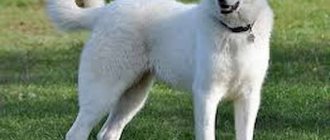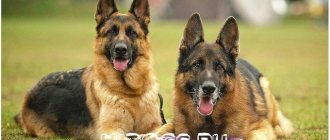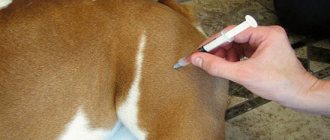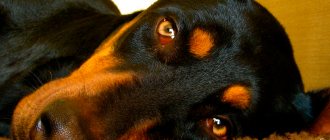German Shepherds are one of the most famous dogs in the world. They have been helping people in everyday life and hunting for several thousand years, protecting their homes and saving lives. Dogs have gone through several wars with people, and now they help the police and intelligence services in searching for prohibited substances and catching criminals.
And these dogs are loyal friends who are ready to become their owner’s faithful companion for life. We have developed tips for choosing and keeping shepherd dogs, based on the recommendations of the best breeders and dog handlers.
Pros and cons of the breed
The breed is famous for the following advantages:
- high intelligence;
- high learning ability;
- endurance;
- absence of unreasonable aggression towards strangers;
- balanced temperament;
- flexible, sociable and loyal character;
- pronounced security qualities;
- getting along with other animals;
- ability to get along with children.
There are also some disadvantages:
- the need for constant physical activity;
- the need for dog training;
- high mobility;
- tendency to bite in the absence of proper training;
- impossibility of living in a small apartment.
All existing deficiencies can be corrected by proper upbringing and appropriate conditions of detention and care.
Flaws
The OI has a number of disadvantages which, with good upbringing, can easily be compensated for by dedicated service throughout life.
The disadvantages include the following:
- High activity levels.
- This dog needs long walks and exercises every day.
- In the process of education, it is necessary to approach the training process competently (it is advisable to contact dog handlers).
- If you don't pay enough attention to training, your dog will bite.
- Does not accept being kept in cramped conditions.
If you decide to get such a dog, then get ready to go for a long and active walk, devoting a lot of your free time to the dog. If you don’t have free time, it’s better not to torture yourself or your dog.
Would you like to get yourself a German Shepherd?
Characteristic
| Good attitude towards children | Attitude towards strangers is average (rating 3/5) | health (rating 3/5) |
| Picky eating habits are low (rating 4/5) | training (rating 5/5) | Shedding average (rating 3/5) |
| care needs (rating 3/5) | The need for communication is sufficient (rating 4/5) | Friendliness is good (rating 4/5) |
| activity (rating 5/5) | Intelligence High (rating 5/5) | Noise is average (rating 3/5) |
| Security qualities are high (rating 5/5) | Cost of maintenance is above average (rating 2/5) | Price is average (rating 4/5) |
History of the breed
The first ancestors of the German Shepherd appeared next to humans 2-3 thousand years ago. Bones, similar in structure to the skeleton of this breed, were found in ancient burials next to the bodies of shepherds and cattle. But they began to spread only in the 18th century, when agriculture was actively developing in Germany. There is an urgent need for helpers for shepherds - a dog that will not just protect livestock from attacks by animals, but manage the flock, gather them together, and prevent them from escaping.
Interesting! The main task of these dogs gave the name to the breed - a shepherd was a dog that served in a sheepfold with sheep.
It was at this time that herding dogs began to be actively bred and sold. They differed in size, color and color, but had the same character. The working dog had to be hardy, loyal, easy to train and focused on the task at hand. Only dogs with such qualities were used for breeding, which largely shaped the current character of the breed.
Later, in the mid-19th century, shepherd breeding became so widespread that the first attempts were made to describe the external standard of the breed. By that time, two types of shepherd dogs had formed in the two largest kennels. In the first, the dogs were more beautiful in appearance, but too active; the latter had a lagging exterior, but their character was calmer and more flexible. It was difficult to decide for sure which species was better, especially since the dogs were transported throughout the country, where they actively interbred with each other.
In 1882, the breed was first presented at an exhibition. Shepherd dogs with a characteristic wolf color aroused delight among all visitors and participants of the exhibition, and from that moment the targeted selection of these dogs began according to clearly established standards. A few years later, a club of shepherd lovers was founded, who, during their short existence, managed to make changes to the appearance of the breed and spread it throughout many European countries.
But the decisive role in the fate of the Germans was played by Max von Stefanitz, a military man with a veterinary education. During his studies, he noticed beautiful and intelligent herding dogs, and after retirement he acquired several dogs and began breeding. He established the final standard of the breed, organized a society of shepherd dog owners, and brought his own selection methods to the largest nurseries.
He was also the first to put forward the idea of using shepherd dogs not only as shepherds, but also as military assistants. By that time, the number of pastures had decreased, and militarization began to rapidly gain momentum, so the decision could not have come at a better time. The officer himself taught the dogs the principles of military and civil service, and developed standards for training shepherd dogs for the police and army.
During this period, shepherd dogs first began to spread in Russia. In 1904, they began to be trained as ambulance dogs and police assistants. The breed very quickly took root in this capacity, local nurseries and communities of owners appeared. The dogs proved themselves during the Russo-Japanese, World War I and Civil War, and in the USSR special kennels were created to provide all military structures with dogs. During the Great Patriotic War, despite the association with the name, German shepherds actively helped soldiers and doctors: they pulled out the wounded, delivered supplies and medicine, and participated in mine clearance.
The war caused great damage to shepherd kennels, but within several decades the population was completely restored. Over time, breed standards were adjusted and tightened, with emphasis placed on breeding individuals with an ideal exterior and strong character. The final standard was formed in 1989. European, American, and Russian breeders joined him.
Brief history of origin
German Shepherd
In the mid-19th century, people were in dire need of dogs that could guard property or help herd livestock. The dog had to meet certain requirements: to be strong, amenable to training, and easily adapt to life in the city.
The task of breeding such a breed was undertaken by Max Emil Frederic von Stephanitz. As a person versed in biology, he decided to breed a new breed of dog that could become both a guard and a faithful assistant to its owner.
The first German Shepherd was officially registered in 1882. It was a male named Greif. Unfortunately, the bred individual did not meet the generally accepted parameters of appearance. It was believed that the color should have a more noble shade.
In the late 80s of the 19th century, a new dog was found, also a male, which became an ideal representative of the breed. The dog was characterized by a high level of intelligence, attractive appearance, strong back and noble posture.
For reference! German shepherds appeared on Russian territory in the mid-20s of the last century. Later, the first club of cynologists was organized in the country, which popularized the breed.
First German Shepherd
Pros and cons of the breed
German Shepherds belong to the group of working dogs that have well-developed working qualities. Adults are distinguished by high intelligence, intelligence, courage and nobility.
The characteristic qualities of a pet largely depend on how responsibly the owner approaches the process of training and education.
German Shepherd training
Advantages of the breed:
- high intellectual abilities;
- German Shepherds are easy to train;
- unpretentious to living conditions;
- are distinguished by developed security abilities;
- a strong character;
- do not show unreasonable aggression towards surrounding people and animals;
- get along with other pets and small children;
- hardy, energetic.
You should also pay attention to the disadvantages of German Shepherds:
- dogs of this breed are highly active and mobile, which will require the owner to take long walks with the pet;
- need constant mental and physical training;
- in the process of training it is often necessary to resort to the help of professional dog handlers;
- German Shepherds require a lot of free space, and therefore it is not recommended to keep them in a small apartment.
The breed is recommended to be owned only by experienced dog breeders who can raise an obedient and command-trained dog from a small puppy. Often during the training process, German Shepherds become impatient and nervous, refusing to complete assigned tasks.
Attention! It is important to help the dog socialize, to instill in it the necessary skills and abilities, which can only be achieved if the authority of the owner for the shepherd dog is unshakable.
Appearance
The appearance of a shepherd dog has been familiar to everyone since childhood from films and television series. It may vary, but must necessarily fit into the breed standard.
Short description
Shepherds are dogs with a beautiful, harmonious physique. They are quite large, proportional, and muscular, which is why when you get to know them, you get a feeling of rigor and reliability at the same time. This impression is completed by erect ears and a smart, meaningful look.
The standard color of the breed is brown with large black spots on the back and face. There are different color options, including all-black and all-white.
Dimensions
The height of a German male within the breed standard ranges from 60 to 65 centimeters with an acceptable weight of 30 to 40 kilograms. Bitches should not be more than 55-50 centimeters and not heavier than 22-32 kilograms. In this case, much attention is paid not only to compliance with these figures, but also to the ratio of height and weight. Tall and too thin or short and too fat are not included in the breed standard.
Head
Shepherd dogs have a large head, proportional to the body. Its shape is elongated, but not very much: normally the ratio of skull to muzzle is 1:1. When viewed from the side, the transition between them is smooth, the bow is massive.
The head is wide in front, any asymmetries are not allowed. The neck is muscular, equal in length to the head.
Mouth
Shepherds have very well developed jaws - this ensures their guard function. They are large, massive, with tightly fitting black lips. There are 20 teeth on the upper jaw and 22 on the lower jaw.
They are white, strong and very large. The breed standard does not include dogs with irregular teeth.
Eyes
The eyes are small and oval in shape. Planted wide but harmoniously; neither protruding nor sunken. According to the breed standard, their color should be brown. In puppyhood, the eyes are sometimes blue, but within 1-2 months of life they darken. Other colors may appear as a result of mating with other breeds.
Ears
The shepherd's ears are large and always erect. The shape is elongated, triangular, rounded at the end. They are located parallel, the ears are directed straight forward. Other placements, including one or two floppy ears, are discarded.
On the outside the hair is shorter than on the muzzle; on the inside it is even sparser and absent in places.
Torso
The body of a German Shepherd is large and harmoniously built. The chest is wide, long, and the shoulder blades are muscular. The back is also wide and well developed.
The spine descends smoothly from the withers to the croup, which slopes noticeably downward. This shape allows the dog to sneak around in a more natural position without being noticed.
Tail
The tail is long and can often reach even to ground level. It is strong, thick at the base, but quite flexible. Its fur is long, soft, fluffy, and lengthens towards the end.
Paws
The front legs of the shepherd are muscular, widely spaced, and parallel when viewed from the front. Large shoulder blades connect to the shoulders at a right angle, the elbow is directed back, pressed to the body.
The hind legs are slightly set back and slightly inclined towards the ground. The thighs connect to the lower legs at an obtuse angle. The pads are round, hard, black, the fingers are tightly pressed to each other. The claws are short and most often grind down on their own.
Wool
Shepherds have fluffy fur of medium length. The undercoat is soft, dense, and lighter in color than the main color. The main hairs are stiffer and straighter.
Color
The most popular color of the Germans is saddleback: with a black V-shaped spot on the back and a red belly and paws. Various shades of light color from fawn to reddish-brown are acceptable. There must be a large black spot on the face.
Zonar - a rare color: a mixture of red and brown colors throughout the body. This is due to the unusual color of each fur: at the base it is light, then dark, yellow and dark again. The color intensity may vary.
Black shepherds should have a uniform coat color without light spots or other inclusions.
There are other interesting colors of shepherd dogs: red, gray, white, golden, spotted. They retain all the characteristic features of the breed, but are not included in the standard.
Possible disadvantages
The following defects are also subject to rejection:
- large females and small males;
- disproportionate dogs;
- drooping ears;
- light spots on the nose and lips;
- irregular shape of the shoulder blades or paws;
- insufficient slope of the croup;
- eye color other than brown;
- short or too long tail;
- colors not included in the standard.
Such defects may appear due to mating with other breeds or shepherd dogs that are not included in the standard. These dogs retain the character, basic external characteristics and intelligence of purebred representatives of the breed, but they will not be able to participate in exhibitions.
Description of the breed, characteristics
Appearance of a German Shepherd
The German Shepherd is a breed that combines noble appearance and intelligence. The maximum height at the withers is 65 cm, weight - up to 40 kg.
Shepherd dogs are harmoniously built:
- The body of dogs has an elongated shape, the line of the back slopes from the neck to the croup, the chest is wide and well developed, the limbs are parallel and slender.
- The head is proportional to the body, the jaws are powerful with a scissor bite.
- Shepherd dogs have medium-sized, dark-colored eyes.
- The ears are erect, in the form of a triangle (in puppies, the ears begin to rise by six months), the shells of which point straight forward.
- The tail of shepherd dogs is lowered to the bottom.
- The coat is short and thick, with developed undercoat.
Those types of shepherd dogs that are adapted to cold conditions are characterized by longer hair than other species.
German Shepherds are one of the most versatile breeds: they can become both a reliable guard and a loyal friend for every family member. They need long walks in the fresh air and are easy to train.
To visualize the relationship between a dog’s height and weight, it is convenient to present the data in the form of a summary table describing the relationship between age, height and weight:
| Age of the dog, months. | Height, cm | Weight, kg | Sternal circumference, cm |
| 1 | 18-20 | 3.4-4.1 | 27-30 |
| 2 | 31-39 | 7.3-9.1 | 45-50 |
| 3 | 39-47 | 13.9-16.5 | 55-60 |
| 4 | 48-55 | 15.9-20.1 | 60-65 |
| 5 | 52-59 | 21-23 | 64-71 |
| 6 | 52-64 | 22.2-26.1 | 67-73 |
| 7 | 52-64 | 25.2-30 | 73-75 |
| 8 | 53-65 | 25.2-32.1 | 74-77 |
| 9 | 52-68 | 26.4-33 | 75-76 |
| 10 | 55-69 | 27-33.2 | 76-79 |
| 11 | 53-69 | 27.5-34 | 76-80 |
| 12 | 55-70 | 33-37 | 77-81 |
Informative tables will allow you to track your dog’s development month by month and identify deviations from accepted norms.
Popular colors of German Shepherds
Breed standards define exactly what a Shepherd looks like. The most popular color is black back and red underside.
There are three types of color, in addition to which there is a list of colors recognized as a defect in the breed. Light irises, white tan marks on the chest and inner parts of the limbs, whitish claws, a red tip of the tail, and the absence of a characteristic “mask” on the face are considered defective.
According to official standards, there are three main types of coloring for shepherd dogs:
- black (rich black coat, any deviation in the form of white spots and tan marks will be considered a deviation from the standard);
- black-backed (the presence of a characteristic “mask”, a black spot on the back, a light shade of fur on the lower half of the body, neck and chest);
- zonal (a light shade of fur near the skin, which gradually darkens, turning from yellow to black pigment, its intensity decreasing as it approaches the sides).
In rare cases, black and tan coat color is distinguished, which many dog handlers distinguish as a separate species.
Character
The main character traits of the German Shepherd are flexibility and balance. Due to these qualities, it is considered an excellent friend and the most suitable service dog. A purebred dog has absolutely no negative qualities, it is easy to train and gets used to the owner’s way of life.
All shepherd dogs are distinguished by very high intelligence. They understand the owner’s mood, easily remember commands and even entire phrases. Thanks to this, they become not only pets or servants, but also true friends. With high intelligence, they lack stubbornness and excessive desire for independence. Of course, a shepherd dog can also disobey its owner and show character, but such cases will be the exception rather than the rule.
These dogs are very active and mobile, they love to walk and play indoors and outdoors. Because of this, they do not get along well in city houses; it is better to have them in the courtyard of a private house. Although, if the apartment is large, and the owners are willing to take frequent walks and spend a lot of time outside, then the dog will get used to this rhythm of life. On the street, trained shepherd dogs behave calmly, do not pull on the leash and go to play only when they are allowed to. Young puppies may get carried away with the game and not want to return, but older dogs do not have this problem.
Because of their devotion, they do not tolerate long separations from their owner. They become sad, apathetic, and may even get sick, so it is not recommended to leave them while traveling. If there is such a need, the dog should be looked after by a person whom the dog knows and trusts well.
But the shepherd dog treats the owner’s absences for work or business normally when they get used to this rhythm of life. To prevent the dog from getting bored, he needs to find something to do during his absence: for example, ask him to guard his home or lay out his toys so that he has something to do. And after returning, you definitely need to pay attention to the dog: play, go for a walk, praise. Having got used to this daily routine, the shepherd dog will painlessly endure the temporary absence of the owner.
Shepherd dogs find a common language with all members of their family, become attached to them and try in every possible way to protect them. They find their own approach to everyone - they play with children, with the elderly - they relax and spend time calmly. But most of all, dogs love their owner, who trains them, walks them and spends more time with them. They feel special devotion to him; they look forward to his return more than anyone else. In addition, shepherds do not tolerate family quarrels. If the owners argue or shout at each other, the dog will definitely try to calm them down. He will not rush at any of them, but will bark for attention and try to distract them until the family calms down.
Shepherds get along well with children of any age and never harm them. But kids still need to be explained how to behave with a dog: don’t pull, don’t scream, don’t hit. If a child unknowingly harms her, the shepherd may accidentally push him away or miscalculate the force due to her size. But with teenagers they very quickly become best friends, spend time outside, play, and take part in sports.
Shepherds most often find a common language with other pets. This is where their shepherd’s past comes into play – they treat small pets with a protective attitude, try to protect them and monitor their behavior. If they grow up with cats from childhood, they become friends with them; they behave differently with dogs, depending on their temperament. They treat guinea pigs, rats, and parrots with mild interest, but do not try to attack.
Shepherds treat strangers calmly, but warily. They scare away some with a growl if they believe that it threatens the safety of the home and owners, but they are never the first to attack. If these people pose a real threat, then the shepherd will defend its family fiercely and aggressively. She will release the attacker only when he retreats.
Education and training
Shepherds have a very high intelligence, so they are easy to train. This must be done at as early an age as possible, because otherwise the dog will become aggressive and uncontrollable.
The training process should begin as soon as the puppy enters the home. We need to show him what can be done and what cannot be done. The bed, table, furniture should immediately become a forbidden zone for him, so that later he does not have to retrain an adult dog. It is important that the dog knows his place in the house - for this you need to arrange his own quiet corner where the puppy will feel safe.
In addition, it is very important to teach the puppy to restrain his natural needs and endure until the owner takes him outside. To do this, you need to temporarily limit movement around the apartment, praise him when he goes to the toilet outside, and strictly make it clear that relieving himself in the house is bad.
In the period up to 4 months, it is worth focusing on the dog’s behavior at home and on the street, introducing it to your everyday life, and explaining the principles of living together between pet and owner. Under no circumstances should you physically punish a puppy - this will not correct its behavior, but will lead to fear and aggression. You shouldn't raise your voice either. The best way to punish a dog for incorrect behavior is temporary ignoring, when the owner does not pay attention to the puppy for 20-30 minutes, does not play with it or talk to it.
Training can begin at 15-16 weeks, if the dog has already established all the household rules of behavior. You can teach the dog the commands “sit”, “lie down”, “come to me”, “give me a paw” and others necessary for comfortable coexistence between the owner and the dog. Shepherd dogs learn such commands easily if you find the right approach to them. During training, you should never physically punish them if the dogs do not obey, and correct execution of the command must be followed by encouragement. First you need to give them some of their favorite food, then you can limit yourself to praise and petting. All learned commands must be regularly repeated and reinforced.
So that the dog not only knows the basic commands, but also acquires additional skills, it must be given to a professional dog handler for training. The same is done if the puppy is adopted when it is older or the dog is difficult to train. Usually part of the training takes place with the owner, so that the dog gets used to following his commands. During training with a dog handler, the dog learns faster and acquires many useful skills that the owner cannot teach him.
Care and maintenance
Shepherd dogs are unpretentious in their maintenance, but in order for the dog to be healthy and beautiful, you need to devote time to caring for him.
Wool
Shepherds have short fur, so it is easy to maintain. Dogs need to be brushed twice a week and ensure that the undercoat does not mat. Particular attention should be paid to the stomach and hind legs - lumps most often form there. If the wool does become matted, it must be carefully cut off with scissors.
In summer and during shedding, it is worth brushing more often. Dogs are bathed once a month. In dirty weather, if the dog is dirty, wipe the fur with a damp cloth and then comb it out.
Eyes
Shepherd dogs' eyes are checked 2-3 times a week; if mucus forms on them, they are wiped with a damp cotton pad. Older dogs are susceptible to eye diseases, so they need special attention. If cloudiness or spots appear on the lens, the shepherd dog should be taken to the doctor - this may be a sign of a developing disease.
Ears
The erect ears of shepherd dogs are cleaned 2 times a week. It is more difficult with shepherd dogs that are not included in the breed standard and whose ears droop. In this case, they are cleaned more often - 3 times a week. You need to pay attention not only to the inside, but also to the place where the ear is broken. Dirt can accumulate there and infection can develop.
Puppies need to be taught the procedure of ear cleaning from childhood - then they will take it calmly. This is important so as not to accidentally injure the dog if it gets scared and twitches.
Paws
Paws should be wiped with a damp cloth after each walk, and in dirty weather, washed in a bowl. It is important to ensure that they become perfectly clean, as clean shepherds will begin to wash themselves and dust will enter the body.
Claws are trimmed as they grow. This depends on the dog’s activity: those who spend a lot of time outside have their nails quickly worn down and require trimming twice a month. Less mobile ones are trimmed more often - once every 8-10 days.
Ticks and fleas
To avoid infection with parasites, shepherd dogs are regularly treated with special medications. A veterinarian will help you decide on them, taking into account individual sensitivity. Once every 2-3 months, the substance is applied to the withers so that the dog cannot reach there with his tongue.
If fleas are already infested, the dog needs to be bathed in anti-flea shampoo, which must be rinsed off well.
Important! This substance is non-toxic, but it is better to prevent your dog from licking it off.
After this, they treat with the same preparation, wash the bedding in hot water, and wipe all surfaces on which the dog often sits or sleeps. The next time the fur is lubricated after a week, and if the fleas do not disappear, the procedure is repeated again. This should be done as soon as the parasites appear: if they have time to multiply, it will become much more difficult to fight them.
After every walk, the dog should be checked for ticks. This should be done especially carefully in spring and early summer, during the period of their increased activity. If a tick is attached, it must be carefully removed in a circular motion. In this case, you cannot use tweezers or use folk remedies, for example, sunflower oil. If the owner does not know how to remove ticks, it is better to entrust this to a veterinarian: he will get rid of the parasite and send it to the laboratory to determine whether it was a carrier of the virus.
Diet
For a German Shepherd to be healthy, its diet must be balanced and varied. The feeding regimen is selected individually depending on age. Puppies are fed 4 times a day until they are 10-11 months old, and after that they are gradually transferred to two meals a day. Food is given in the morning and evening, most often after a walk. Thanks to this, the dog will be active on the street, and in a calm home environment the food will be able to be digested. Service or guard dogs can be fed even once a day. Before bedtime. Snacking during the day is not allowed unless it is praise for correctly following commands. In this case, the serving size should be symbolic.
For proper functioning of the body, German Shepherds must receive proteins, carbohydrates, vitamins and minerals. These substances are contained in special ready-made premium food - cheap substitutes cannot provide the dog with the necessary set of substances. All dogs eat them with pleasure and they are easily digestible, but even the most expensive food cannot be given constantly. Flavor enhancers and additives can cause allergies and indigestion in some shepherds.
The main advantage of natural food is that the owner himself can monitor the quality of the food and not rely on the honesty of the manufacturer. The only disadvantages include the high price and time-consuming preparation. But when using natural food, the likelihood that the shepherd will grow up healthy and will not have health problems is much higher. Vitamin supplements for this breed will help balance the diet.
In this case, it is important to correctly calculate the serving size and the ratio of nutrients in it. An adult shepherd should eat 1-1.5 kilograms of food per day depending on size.
Important! Pregnant and lactating females are fed more; in hot weather, the amount of food is slightly reduced.
The daily diet should consist of three parts - fresh or lightly boiled meat, porridge, milk or vegetables. You can give fish 1-2 times a week. As a treat, you can sometimes give “sugar” bones and mild crackers, but not more than twice a week.
The following foods should be excluded from the diet:
- bread, pastry, pasta;
- potato;
- legumes;
- all spices;
- any sweet and spicy foods;
- fried, fatty;
- tubular bones.
Health and illness
German Shepherds enjoy good health, but are susceptible to several genetic and acquired diseases.
- Hip dysplasia. It occurs due to the destruction of joints and manifests itself with age. Symptoms include lameness, fatigue, and decreased activity. Maintenance therapy is prescribed by a doctor; for prevention, it is necessary to control the dog’s activity and not give it unnecessary stress.
- Cardiomyopathy. This is a heart disease that occurs in sedentary dogs and those who do not receive enough nutrients and vitamins. Manifested by fatigue, shortness of breath, cough. It is treated with medications prescribed by a veterinarian and correction of diet and activity.
- Atopic dermatitis. A skin disease most often manifested by itching and scratching in young dogs under 3 years of age. It is treated with antihistamines and drugs that strengthen the immune system.
- Intermittent claudication. It appears in puppies, leading to lameness, fever, and refusal to eat. It is treated with anti-inflammatory drugs and, if necessary, antipyretic drugs. Requires medical supervision.
- Volvulus. Occurs due to the structural features of the pelvis of German Shepherds and is manifested by bloating, belching, and fever. If you suspect a volvulus, you should immediately consult a doctor, the disease is life-threatening.
- Worms. Their presence is manifested by lack of appetite, lethargy, and nausea after eating. For prevention, shepherd dogs are given antiparasitic drugs every 3-4 months. If the parasites have multiplied greatly, consult a doctor.
In order for a shepherd dog to be healthy and live a long time, you need to regularly vaccinate it and carefully monitor its condition and, if there are any ailments, immediately consult a doctor. But even an active dog without signs of illness should be taken to the veterinarian once a year, and dogs over 7 years old - at least twice.
Interesting Facts
Owners of shepherd dogs notice many interesting behavioral features in them, and experienced hereditary breeders can share unusual facts from the history of the breed.
- Despite the fact that the ancestors of the German Shepherd are more than 3 thousand years old, this is one of the youngest breeds - it is just over 100 years old.
- Despite their age, Germans are one of the most popular dogs on the planet. Their appearance is familiar to everyone, and, according to observations, when most people hear the word “dog,” they think of a German shepherd.
- Shepherds are excellent actors. Thanks to their high intelligence, they are often featured in films - they cope well with roles, listen to commands flawlessly, repeat the same type of actions many times and are able to work for many hours in a row.
- German Shepherds are not only police officers, but also soldiers. They participated in wars and were in many hot spots, where they provided assistance to the wounded, carried food, water and medicine.
- After the Great Patriotic War, they wanted to rename German shepherds, but none of the new names took root for a long time. Moreover, even the association with recent enemies did not spoil the attitude towards these intelligent and noble dogs.
- Shepherds can become foster parents. They “adopt” not only other people’s puppies, but also kittens, wolf cubs, fox cubs and even tiger cubs.
- The bite force of a shepherd is 80-100 kilograms, which can easily break human bones and even kill. True, they attack only when threatened.
- Almost every country in the world has a story about the famous shepherd hero, which is why monuments to them have been erected in many cities.
Cons of a German Shepherd
Despite all the listed advantages, representatives of the breed also have their disadvantages.
The disadvantages include:
- Mandatory training. These dogs need at least a basic UGS (controlled city dog) course. Without proper upbringing and training, a dog can become uncontrollable and dangerous to other people. A German Shepherd must listen and hear its owner, respect him and remain obedient even in extreme situations.
- Need for active games, activities and walks. These dogs need regular and long-term (up to 2-3 hours, and sometimes more) time outside. Moreover, the shepherd dog needs not just games, but mental stress. While walking, you should definitely repeat commands or learn new ones; it’s enough to spend 15-30 minutes on this. Without such activities, the German will get bored and will look for entertainment on his own (he will start gnawing things and sofas, gutting the trash can, etc.).
- Aggression control. Some shepherds can be overly aggressive towards others. The owner should pay special attention to socialization, during which the dog is taught that not all people and animals pose a threat.
- Presence of fur and odor in the room. During the shedding period, German Shepherds shed a lot of undercoat. As a result, daily cleaning is required, otherwise the entire floor in the apartment where the dog lives will be covered with hair. Also, representatives of the breed have a specific smell, which not everyone will like.
- Large sizes. German Shepherds are not small, decorative companions. These are strong animals that, when jumping on the owner and playing, can leave many bruises on the body. When buying a puppy, you should not forget about this.
- Sensitive digestion and weak musculoskeletal system. Some representatives of the breed suffer from food allergies. In this case, you should carefully select the food. Also, many show-line German Shepherds have joint dysplasia, but recently breeders have been paying more attention to this problem and are trying to exclude sick sires from breeding.
How to choose a German Shepherd puppy
Before you start choosing a puppy, you need to decide on a nursery or breeder. It is better to give preference to trusted owners who have documents for their parents. But it is better not to buy dogs at poultry markets - there is a risk of taking a sick animal.
You should not buy a shepherd from those owners who refuse to show all the puppies from the litter or hide information about their parents. You also need to pay attention to the conditions in which the dogs are kept - dirt, small enclosures and cramped spaces can significantly affect the health of the puppies.
Once a breeder has been selected, you need to decide on the age of your future dog. You need to take into account that at 1-2 months of age it is easier to accustom a puppy to its own rhythm of life, but in 3-4-month-old teenagers it is easier to trace the character.
Then you need to take a closer look at each small dog in the litter. It is worth observing their behavior and choosing the one you like best by temperament. The ideal option is a moderately active, but calm puppy, not shy, friendly. It is important to choose someone who will be drawn to the future owner, because the first impression is very important for a dog.
After this, you need to carefully monitor the condition of your future dog. The coat should be smooth, without tufts or bald patches, the eyes should be clean, the gaze should be clear. Those who are going to take their dog to exhibitions need to check compliance with the breed standard. If you are getting a dog just as a pet, you don’t have to do this. Rejected puppies are cheaper, but in this case it cannot be guaranteed that the basic behavioral qualities will correspond to the German Shepherd breed.
How to properly raise and train a German Shepherd
On various information portals you can find a sufficient amount of information covering aspects of raising German Alpine Dogs.
In the process of training a puppy, it is important to instill in him respect for his owner and determine his dominant role. To gain respect from a dog, you will have to make an effort. The unshakable authority of the owner will make the dog obedient and flexible.
Training a German Shepherd may require the experienced hand of a dog handler. The process of education must begin at birth. A grown-up puppy already reacts worse to commands and educational measures.
Young dogs are easier to educate and train than older dogs. A German Shepherd that is not properly trained may exhibit unreasonable aggression towards family members.
During the game, the shepherd kitten can bite its owner, then its muzzle should be pressed to the floor and look him straight in the eyes. This will calm the dog.
Attention! It is important to remember that during the training process you should not raise your voice, but only change your behavior tactics.
In the dog breeding community, there are two types of German Shepherd breeding: service and show.
- For work in law enforcement agencies, individuals are selected who are highly resistant to stress, have an easy-going character, and are trainable.
- Exhibition animals must meet generally accepted breed standards. The main goal of exhibition selection is to improve the quality of the breed’s exterior.
The German Shepherd is suitable for active and persistent people who can devote enough time to fully walking the dog and the process of raising it.
How much does a puppy cost?
The price for a German Shepherd puppy ranges from 6 to 60 thousand rubles.
- A dog without a pedigree will cost up to 12 thousand; they are not included in the breed standard and cannot participate in exhibitions.
- Purebred standard puppies cost from 12 to 36 thousand rubles, depending on the place of sale, nursery, and the number of babies in the litter. They participate in exhibitions and are guaranteed to bear all the distinctive features of shepherd dogs.
- Puppies from famous parents and valuable representatives of the breed, as well as heirs of dogs from foreign clubs, will cost more than this amount.
The German Shepherd is an intelligent and noble dog that helps people both in the service and in everyday life. She will become a loyal friend for an active person who is ready to devote time, attention and love to her.
Features of care
Feeding a German Shepherd
Caring for a German Shepherd will require a competent approach and responsibility from its owner. The main conditions for optimal dog growth are diet and proper hygiene.
The dog's diet must be balanced, contain all the necessary vitamins and microelements, which will allow the dog to grow healthy and fully develop, living a comfortable life.
How much a dog should eat is determined depending on its age. During the growth process, the puppy's joints and muscles are subject to significant stress. A competent diet and diet will allow you to raise a healthy and cheerful dog.
Attention! A dog at a young age is not yet able to control the amount of food it eats, so the feeding bowl should not be freely available. It is important to provide your dog with something to drink, for which regular drinking water is suitable.
From early childhood, a shepherd puppy must be accustomed to the necessary hygiene procedures - examining paws, trimming claws, cleaning eyes and ears. Puppies are born with drooping ears, which begin to rise by two months. Dogs' ears should be erect by six months.
It happens that the ears do not have time to rise to the established age. In this case, a knowledgeable specialist who can show the owners how to do this in a fashionable way will help to raise the ears.
German Shepherd puppy
Another important condition in the process of caring for a German shepherd is that the regime of the owner and the dog must coincide with each other. The pet must accurately determine the time of feeding, playing and walking. A sleeping place must be provided for the animal to sleep and rest.











